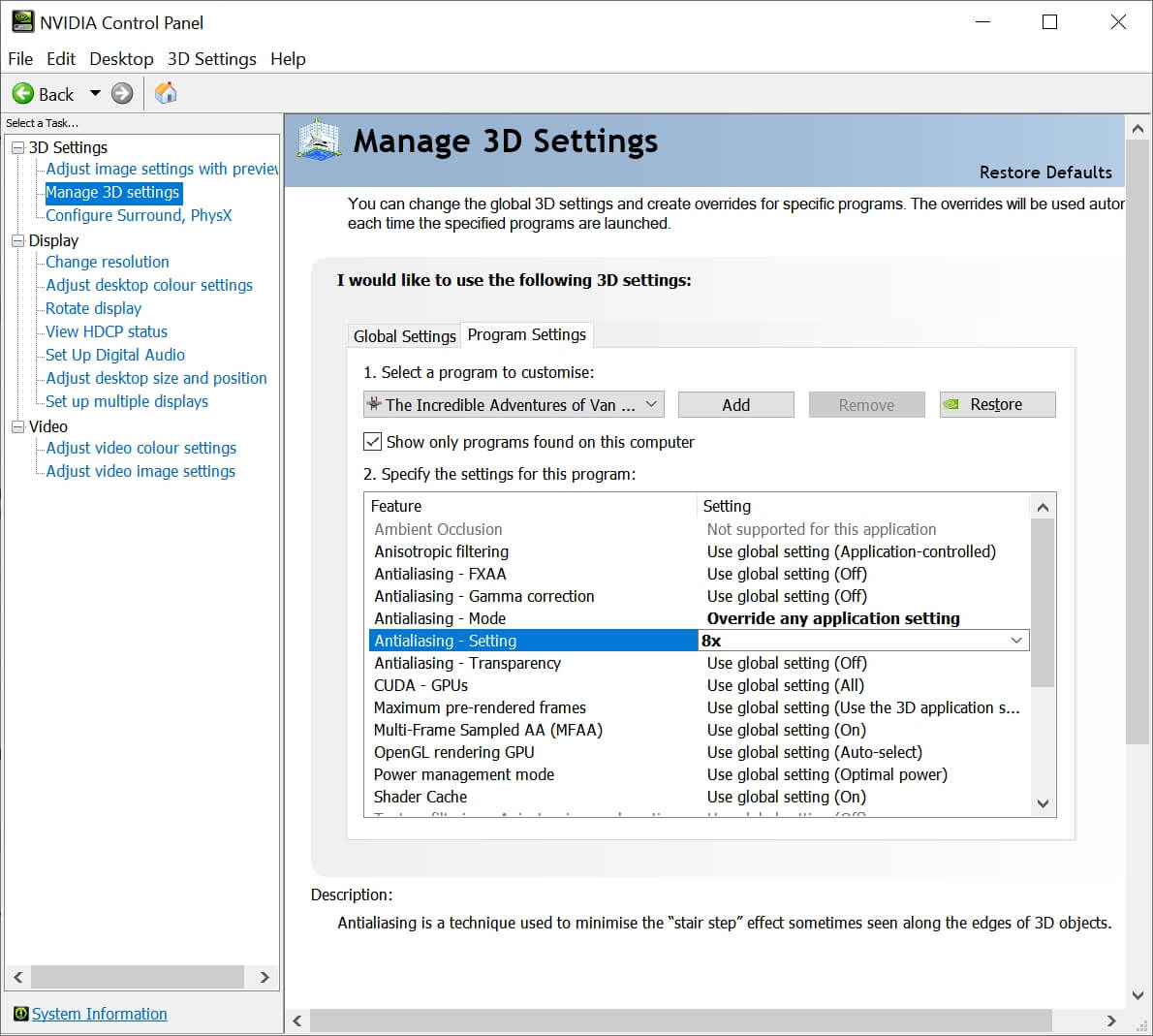

- ADAPTIVE POWER MANAGMENT NVIDIA CONTROL PANEL DRIVERS
- ADAPTIVE POWER MANAGMENT NVIDIA CONTROL PANEL MANUAL
- ADAPTIVE POWER MANAGMENT NVIDIA CONTROL PANEL PC
This setting works well with SSDs but is not recommended on HDDs. The shader cache stores these compiled shaders so that subsequent runs of the same game do not need to perform the shader compilation”. Shader compiles are normally performed each time a game runs and are a common cause of game-play stuttering.
ADAPTIVE POWER MANAGMENT NVIDIA CONTROL PANEL DRIVERS
*Shader cache/Shader cache size on newer drivers – keep it on or on driver default value – “controls the maximum amount of disk space the driver may use for storing shader compiles. Since we are maximizing latency and FPS G-Sync is off and the maximum refresh rate is used. The setting will change if you use Adaptive sync. *Refresh rate – highest available to use the maximum potential of your monitor.
ADAPTIVE POWER MANAGMENT NVIDIA CONTROL PANEL PC
If you are on a laptop or on a PC that has thermal issues and are willing to sacrifice performance choose a different value that will help with power saving. *Power management mode is set to Prefer maximum performance to allow the GPU to boost to the highest clock and keep it that way for best latency and performance.

If your games do not use more than 85% of your GPU leave Low Latency Mode off. optimal will try and find a balance between those two. max performance will attempt to keep the gpu at max performance when 3D applications are running, regardless of the current load on the GPU. adaptive mode will try and adjust GPU settings based on the current load on the card. Having this on Ultra might affect your FPS a bit since your CPU has to work harder. Aura RGB provides a nearly endless spectrum of colors, patterns and even the ability to link lighting to music, in-game action, or CPU/GPU temperatures. and the basics are spelled out in the description in Nvidia's control panel. We really don’t have an explanation for that either.* Low Latency Mode you can keep on On or Ultra as it helps with limiting queued frames, therefore, lowering input lag in games that do not use Nvidia Reflex technology. On this video card, it is Optimal Power that is the “slowest” at 79.8FPS and Adaptive and Prefer Maximum Performance are 2-FPS faster at 81FPS. They are completely opposite of the GeForce RTX 2080 SUPER. What’s even odder though are the results on the GeForce RTX 2060 SUPER. Our only going theory on this is that Prefer Maximum Performance is making the video card hit its power limit faster, thus cutting back the clock speed a bit, which does seem to affect performance ever so slightly. As we saw previously it can dive down below Optimal and Adaptive for whatever reason.

Our only theory here might be in regards to the GPU Frequency. However, it is there and yells at you when you look at it. However, we are actually losing a bit of performance at Prefer Maximum Performance, it’s slight, 2-FPS, and could be considered our margin of error. What we see though is that Optimal Power and Adaptive are dead even on performance, our run-through does seem to be very consistent.
ADAPTIVE POWER MANAGMENT NVIDIA CONTROL PANEL MANUAL
We are performing a manual run-through in this game, so there are variances due to that, a margin of error, plus this game just performs a lot better overall. This game is different from the previous in a couple of ways. We move from the helicopter drop, call an airstrike on the town below and work our way all the way through the town taking out the baddies. For our evaluation, we are using a manual run-through in the first section of the campaign. We are utilizing custom game settings that we have manually selected which are set to “High” settings.

We are using the new game, Call of Duty: Modern Warfare.


 0 kommentar(er)
0 kommentar(er)
